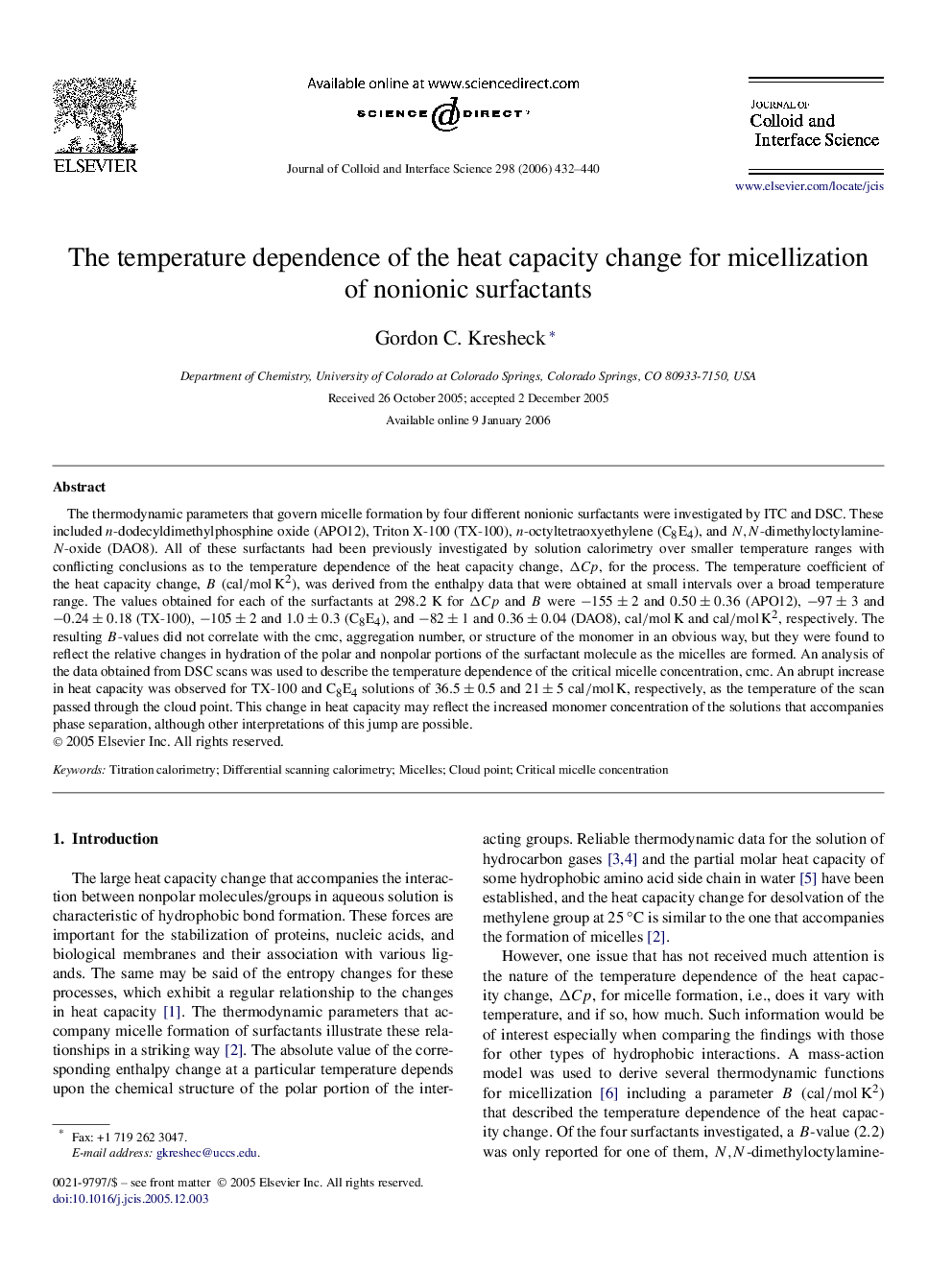| کد مقاله | کد نشریه | سال انتشار | مقاله انگلیسی | نسخه تمام متن |
|---|---|---|---|---|
| 613649 | 880725 | 2006 | 9 صفحه PDF | دانلود رایگان |

The thermodynamic parameters that govern micelle formation by four different nonionic surfactants were investigated by ITC and DSC. These included n-dodecyldimethylphosphine oxide (APO12), Triton X-100 (TX-100), n-octyltetraoxyethylene (C8E4), and N,NN,N-dimethyloctylamine-N-oxide (DAO8). All of these surfactants had been previously investigated by solution calorimetry over smaller temperature ranges with conflicting conclusions as to the temperature dependence of the heat capacity change, ΔCp, for the process. The temperature coefficient of the heat capacity change, B (cal/mol K2), was derived from the enthalpy data that were obtained at small intervals over a broad temperature range. The values obtained for each of the surfactants at 298.2 K for ΔCp and B were −155±2−155±2 and 0.50±0.360.50±0.36 (APO12), −97±3−97±3 and −0.24±0.18−0.24±0.18 (TX-100), −105±2−105±2 and 1.0±0.31.0±0.3 (C8E4), and −82±1−82±1 and 0.36±0.040.36±0.04 (DAO8), cal/mol K and cal/mol K2, respectively. The resulting B-values did not correlate with the cmc, aggregation number, or structure of the monomer in an obvious way, but they were found to reflect the relative changes in hydration of the polar and nonpolar portions of the surfactant molecule as the micelles are formed. An analysis of the data obtained from DSC scans was used to describe the temperature dependence of the critical micelle concentration, cmc. An abrupt increase in heat capacity was observed for TX-100 and C8E4 solutions of 36.5±0.536.5±0.5 and 21±5 cal/molK, respectively, as the temperature of the scan passed through the cloud point. This change in heat capacity may reflect the increased monomer concentration of the solutions that accompanies phase separation, although other interpretations of this jump are possible.
A nonlinear plot of the enthalpy change for micelle formation leads to a temperature dependent heat capacity change for the process. DSC may be used as an independent method to determine the temperature dependence of the cmc and describe the enthalpy and heat capacity changes that accompany liquid/liquid phase separation at the cloud point.Figure optionsDownload high-quality image (60 K)Download as PowerPoint slide
Journal: Journal of Colloid and Interface Science - Volume 298, Issue 1, 1 June 2006, Pages 432–440